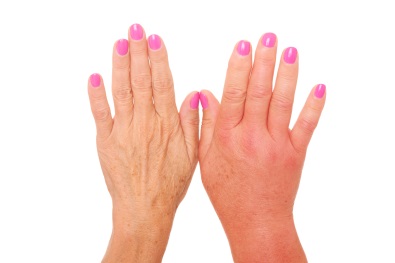 The goal of lymphedema treatment and management is not to cure the condition.
The goal of lymphedema treatment and management is not to cure the condition.
Although lymphedema is incurable, the swelling and pain can be reduced through the use of the right strategies.
Among the strategies used for the treatment and management of lymphedema are Complex Decongestive Therapy or CDT, diet and exercise, and the use of compression garments like a lymphedema glove.
Women (and men) suffering from lymphedema are advised to wear compression garments on the affective limbs after completing decongestive therapy. These garments can aid in the reduction of edema while facilitating the flow of lymph fluids out of the affected appendages.
When To Wear
Your doctor or therapist may recommend custom-fit or over-the-counter compression garments. These garments should be worn during the day in order to help in edema reduction. You can remove these garments before turning in for bed but you need to wear these again upon waking up.
When To Replace
Ideally, you should replace your garments, including the gloves, on a regular basis. Most compression garments can last up to six months with proper care. After six months, you will notice that the compression garment will lose its effectivity due to wear.
Should you wear a glove with your compression sleeve?
Many experts believe that patients should also provide protection for their hands using either a glove or gauntlet along with a compression sleeve. Wearing a sleeve alone can push the lymphatic fluid into the hand instead of going up the body.
Should you use a glove or a gauntlet?
The difference between a glove and gauntlet is that the former can cover each finger while the latter cannot. Covering the fingers is sometimes necessary to move the fluid away from the hand and prevent pooling in the fingers. Often, it will be your doctor who will decide which type of compression garment is ideal for your situation, taking your lifestyle into account.
What Level Of Compression
Your doctor or therapist will recommend the right level of compression for your compression garment based on the swelling of your arm as well as his treatment and management plan. Class 1 compression garments are generally used for prevention for patients at risk for swelling while Class 2 compression garments are usually recommended for patients with more severe edema.
The size of the gloves and other compression garments you will need to order can be determined by your doctor, therapist or a certified fitter. If you do not have access to these professionals or if you are ordering online, you will need to consult the sizing chart provided by the seller and take your own measurements. Remember, it is important to get the measurements and fit right. The best way to guarantee that you get a proper fit is to go somewhere that has certified fitters on staff.
So what’s your next step…
Do you need a lymphedema glove? Are you looking to get the best fit possible so that you don’t have to worry about it’s effectiveness?
All of our locations are staffed with certified fitters, that can assist you in getting the proper fitting glove.
Click here to find our location that is closest to you and give us a call to schedule your appointment.
 Facebook
Facebook
Leave a Reply